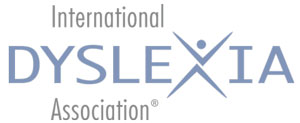By: Elisabeth Liptak, IDA Director of Professional Development
One-third of our nation’s children are consistently found to be reading at the “below basic” level, according to the National Assessment of Educational Progress. IDA is committed to turning around this unacceptable statistic by changing the way teachers are trained to teach reading. It’s critical that teachers receive this training before they get to the classroom because that’s the optimal time to absorb the necessary knowledge and skills.
Numerous research studies have demonstrated that teachers in training at most Schools of Education receive insufficient coaching in language structure and reading science, which translates into ineffective reading instruction when they arrive in the classroom. The problem is not limited to teacher training programs at the undergraduate level. Even teachers holding master’s level reading specialist and special education degrees lack a thorough grounding in evidence-based reading knowledge and practice. This has devastating consequences for all students, but especially for the students with dyslexia and other reading struggles.
IDA outlined the knowledge and skills that teachers need in the IDA Knowledge and Practice Standards for Teachers of Reading, a comprehensive document supported by research and evidence. One of the main goals in publishing the standards in 2010 was for universities to use them as a framework for developing course content in their teacher training programs.
What specific knowledge do teachers in training need to be effective reading teachers? The IDA Standards emphasize the need for deep training in the structure of language, or what IDA calls Structured Literacy. This includes knowledge of the speech sound system (phonology), the spelling system (orthography), the structure of sentences (syntax), the meaningful parts of words (morphology), meaningful relationships among words (semantics), and the organization of spoken and written discourse. The IDA standards also include foundational knowledge of oral and written language development, dyslexia and other language difficulties, and the administration and interpretation of assessments and their role in planning instruction. The IDA Standards address both the knowledge base and how to translate that into effective practice.
In an effort to identify and encourage exemplary university programs that are teaching this content, IDA decided to conduct reviews of teacher training programs for their alignment with the IDA Standards, leading to accreditation by IDA. In the fall of 2011, more than 800 deans in schools of education nationwide received a letter inviting them to participate in the voluntary review process. In the first round, only nine programs agreed to have their programs reviewed. These programs became the first group to be recognized by IDA and were followed by eight programs reviewed and accredited by IDA in 2014. Most of these programs are at the graduate level, with a mix of programs in general education and special education. The list of currently accredited universities can be found on the IDA website. IDA plans to conduct these reviews every two years, with the next round scheduled to begin in January 2016.
While we strive to change the way teachers are initially trained at a systemic level, we recognize that this change will take several years to become a reality in classrooms around the country. If you’re the parent of a child with dyslexia, you need a more immediate solution.
Here are other ways that parents can advocate for change in teacher training:
- Ask that schools and districts hire teachers trained in Structured Literacy through one of the university programs accredited by IDA. More schools will be added to the list in 2016.
- For teachers already in the classroom, ask that school districts provide in-depth professional development to teachers in Structured Literacy through one of the non-university based teacher training programs accredited by IDA. This list of programs is available on the IDA website.
- Describe the necessary knowledge and skills that a teacher needs by using the language from the IDA Standards (summarized in this article).
- IDA is in the process of developing a certification for classroom teachers and dyslexia specialists that will be available in 2016. This certification will demonstrate that a teacher possesses the knowledge and skills outlined in the IDA Standards. Parents should advocate for the hiring of teachers and other professionals that hold this certification.
In a relatively short time, IDA’s accreditation of teacher training programs aligned with the IDA Standards has begun to create a dialogue at universities around the country about appropriate course content and training of teachers. With your help we’ll continue to raise awareness among all constituent groups — universities, schools districts, administrators, teachers and other parents – so that all children reach their reading potential.
Copyright © 2016 International Dyslexia Association (IDA).
We encourage sharing of articles from Dyslexia Connection. If portions are cited, please make appropriate reference. Articles may not be reprinted for the purpose of resale. Click here to request permission to republish articles from Dyslexia Connection or send an e-mail to info@interdys.org for more information.

